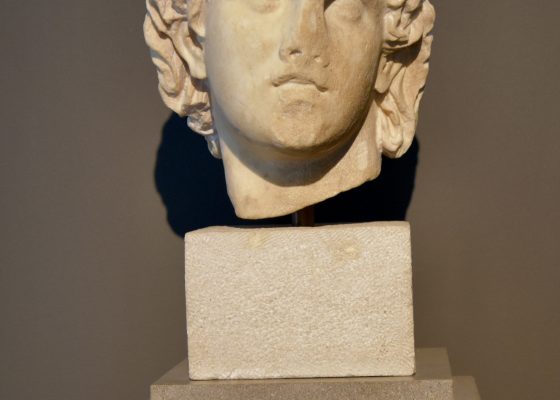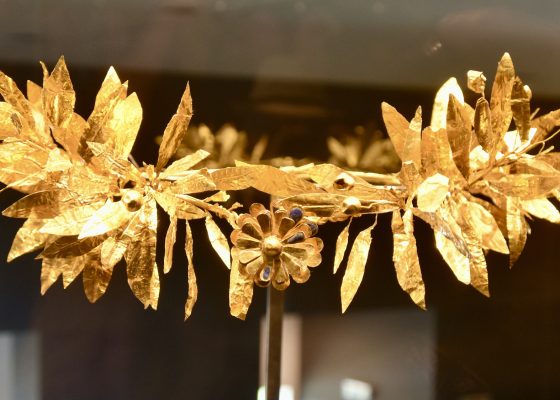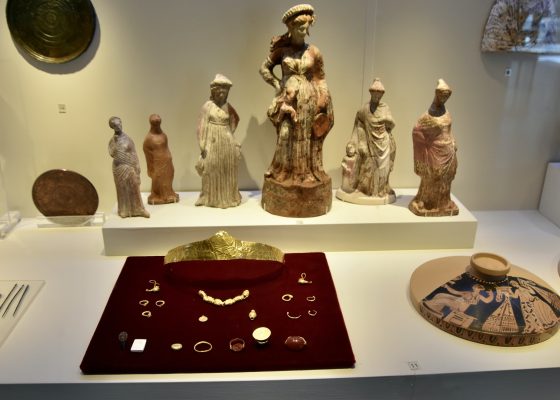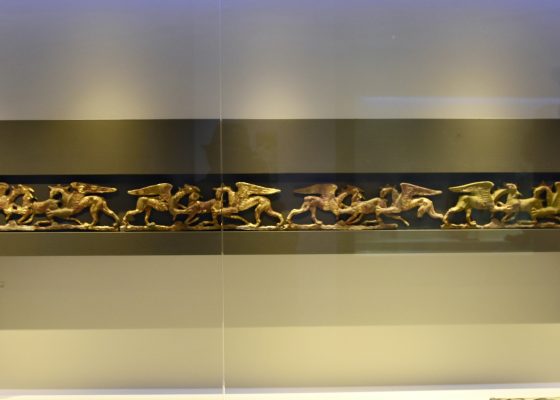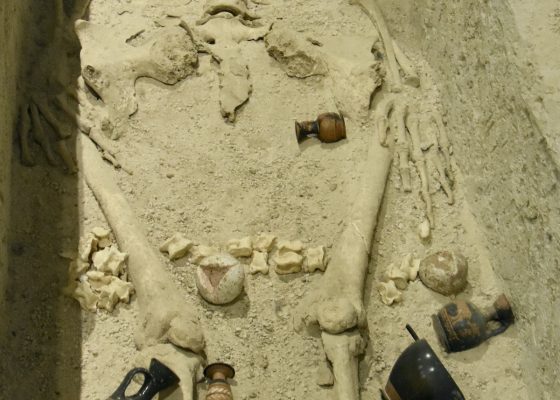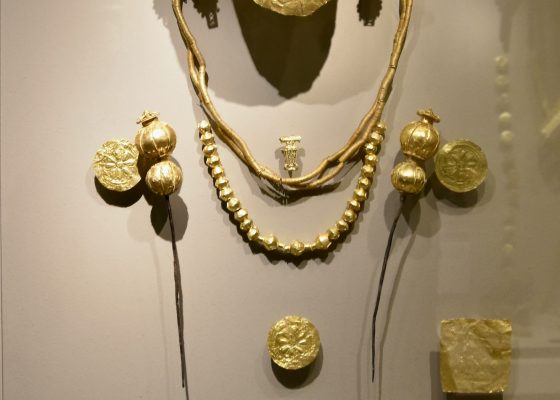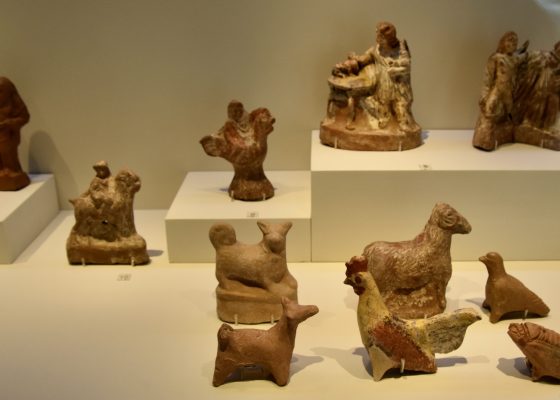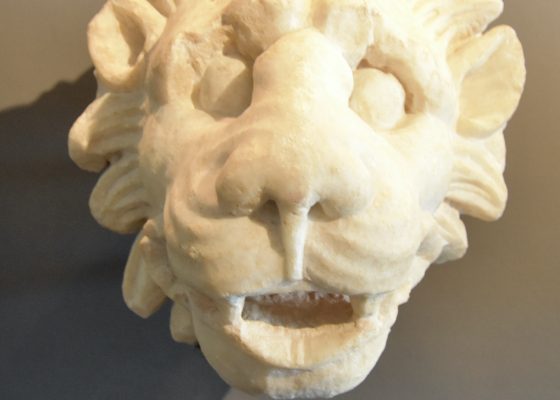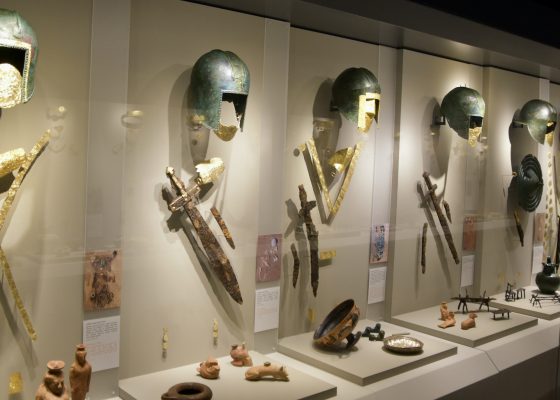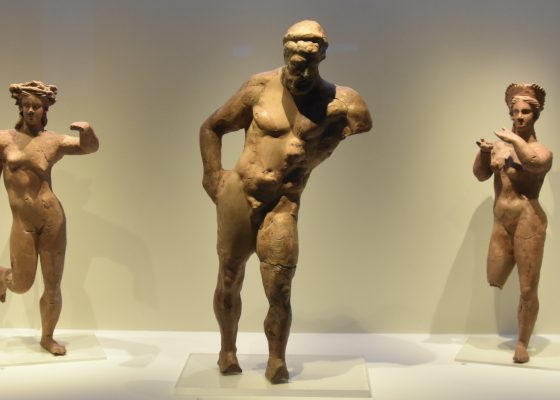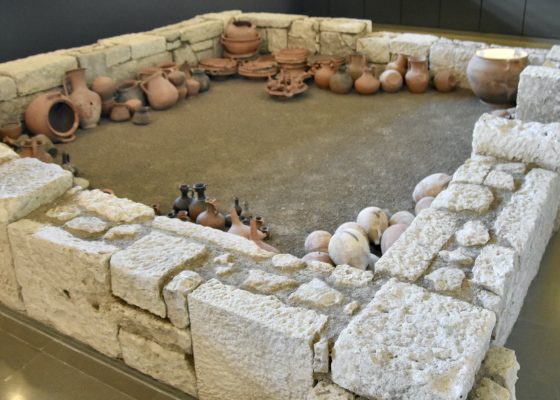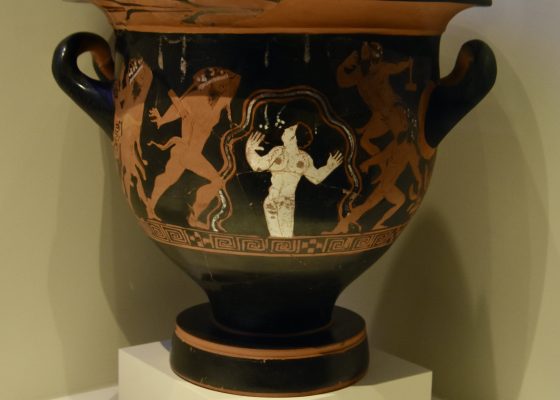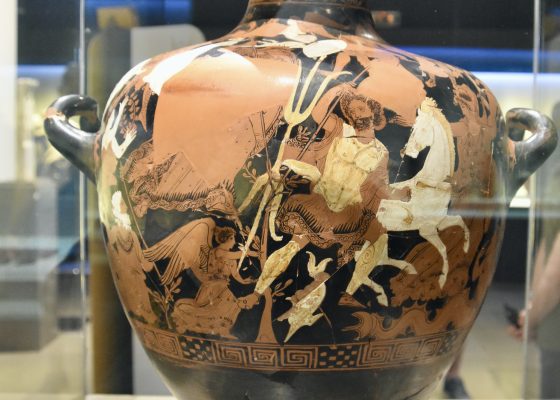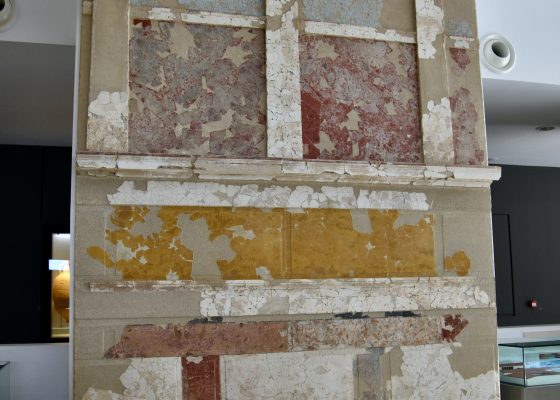Pella – Birthplace of Alexander the Great
After three fabulous days in Thessaloniki the Adventures Abroad Via Egnatia tour led by Victor Romagnoli is moving into the heartland of ancient Macedonia. Alexander the Great and to a lesser extent, his father Philip II of Macedon, are two of the most interesting and enduring characters of the ancient world. How this one young man from an upstart kingdom in northern Greece managed to conquer most of the known world and destroy the mighty Persian Empire in the process has fascinated and baffled historians almost from the time it happened. Today we will visit Pella, the site of Alexander’s birth and in the next post Vergina where his father was assassinated and buried in one of the most splendid tombs ever found. This is a day I have long looked forward to being a lifelong Alexander aficionado, so please join Victor and the rest of us as we follow in the footsteps of Alexander the Great.
Pella was probably founded in the early 4th century BCE by King Archelaus I to replace Aigai as the capital of Macedonia. I say probably because the history of early Macedonia is nowhere near as well documented as the Greek states further to the south like Athens, Thebes, Sparta etc. The Macedonians, right up until Philip II’s conquests were basically considered to be northern barbarians by the other Greeks. Another source says it was founded by King Amyntas III, the father of Phillip II and grandfather of Alexander. Whoever was the rightful founder, the fact was that from about 420 BCE onward to its gradual dissolution after the Roman conquest in 168 BCE it was the most important city in Macedonia. Not only was it the seat of government for Philip, Alexander and all the subsequent Macedonian kings, but it was also a magnet for artists, poets, playwrights and other notables from all over the Hellenic world. The great tragedian Euripides lived out his final days here and Cicero dropped by after the Romans took over, travelling by way of the Via Egnatia that passed through the city.
The city was partially destroyed by an earthquake in 90BCE and never recovered its importance thereafter with Thessaloniki usurping its place as the most important city in northern Greece.
As hard as it is to believe, given that Pella is now at least 30 kms. (18,6 miles) from the Aegean, it was, during its Macedonia heyday, a seaport. In fact it was this accessibility by sea that motivated the move of the capital from landlocked Aigai to Pella. The inlet to the sea has long silted over and today there is a small village of about 2,450 people just off the Thessaloniki-Edessa highway. Its main claim to fame today is as the starting point of the Alexander the Great Marathon that goes from here to Thessaloniki. In terms of what there is to see and do, there is the actual archaeological site of ancient Pella and the excellent museum which is in another location. Let’s start at the archaeological site.
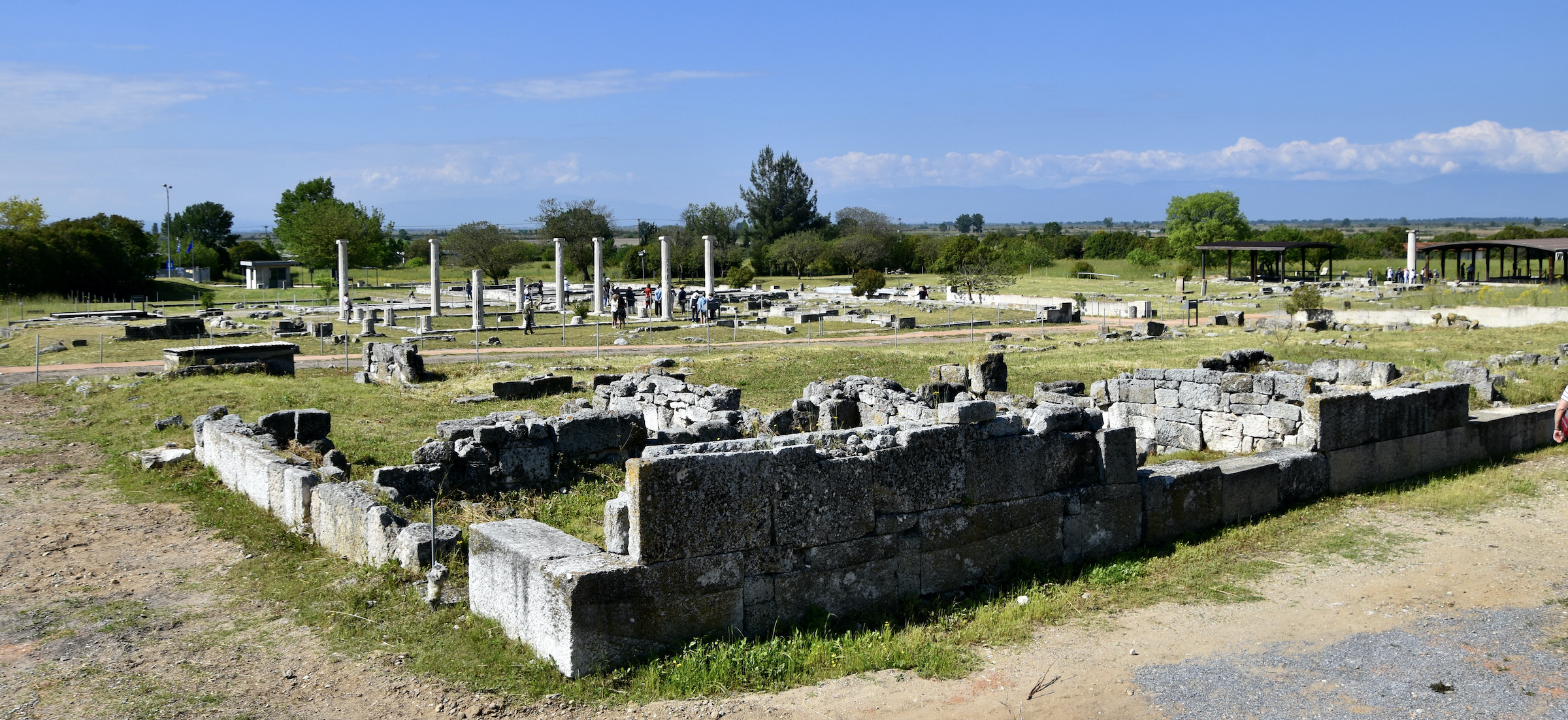
From the photo above you can see that there really isn’t that much left of Pella – no temples, palaces or other grand structures. In that sense it’s bound to be a disappointment, I mean c’mon, this is where Alexander the Great was born and raised! Where is the palace of his father Philip? Actually it’s on that hill behind that structure covering some mosaics.

Although archaeologists have been excavating Pella since 1914 it was only in 2011 that serious work was begun on the palace and today it is off limits to tourists. Also, since 2000 over 1,000 Macedonian tombs have been found and there are estimated to be as many as 20,000 in the Pella area. As we will see when we get to the museum these tombs can be filled with fabulous grave goods so the authorities don’t want just anybody poking around. The end result is that most of the tourism promoting ancient Macedonia is aimed at Vergina and not Pella. There are virtually no other tourists on site during our visit.
All that being said, our local guide Nikos explains why it’s still worthwhile visiting.
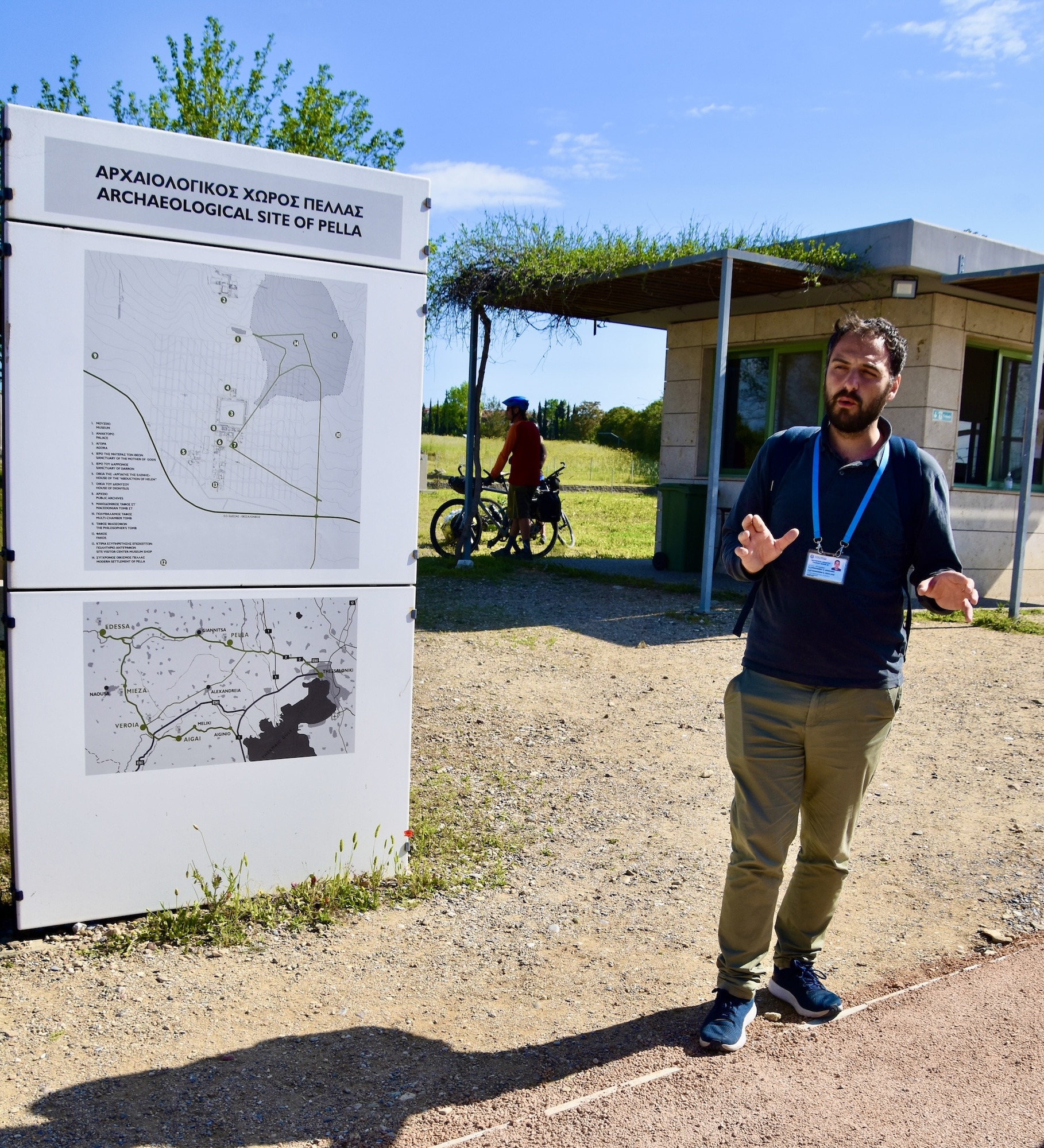
This field covers what was once one of the largest agoras in the Greek world.

Nikos takes us to the area with the most standing columns on the site which are all part of one enormous house, the House of Dionysius so named for a mosaic found there which we will see in the museum.
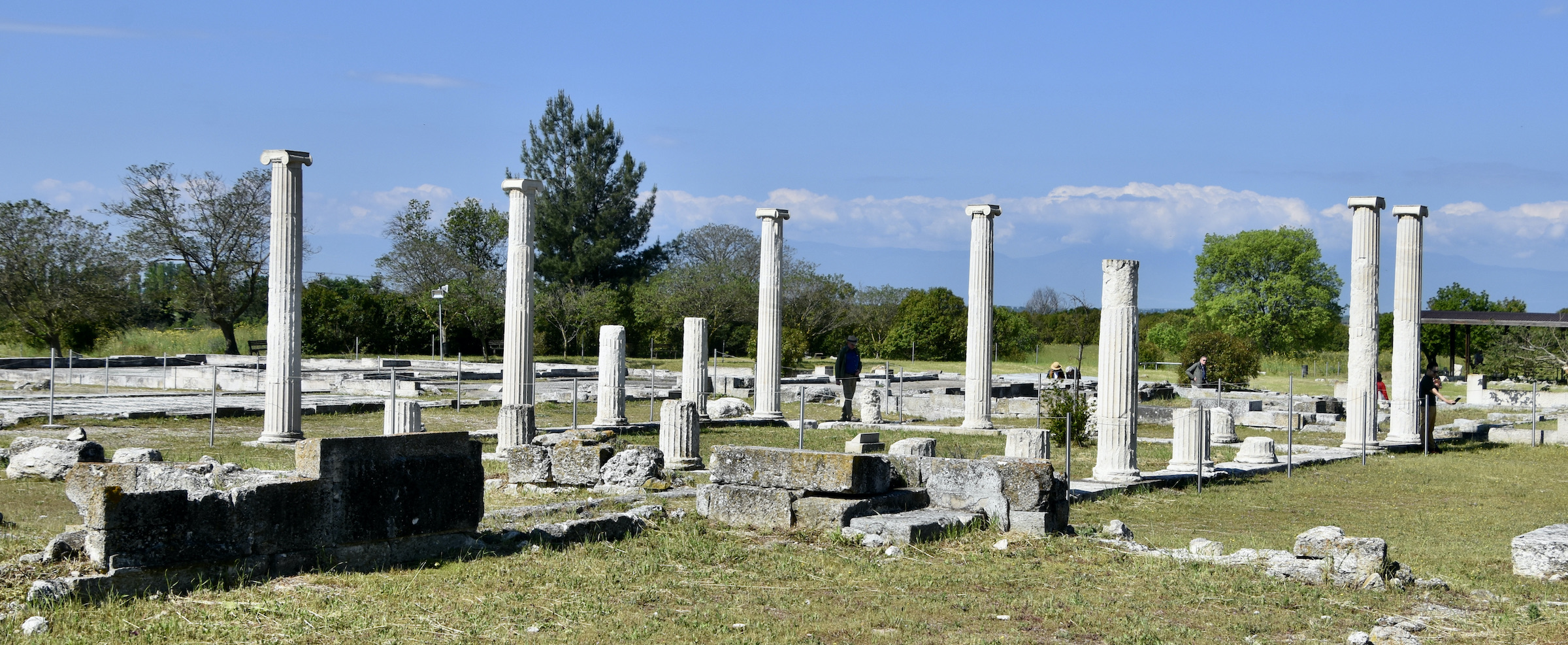
Other than that there is not much else to see so we hop back on the bus and drive the short distance to the museum.
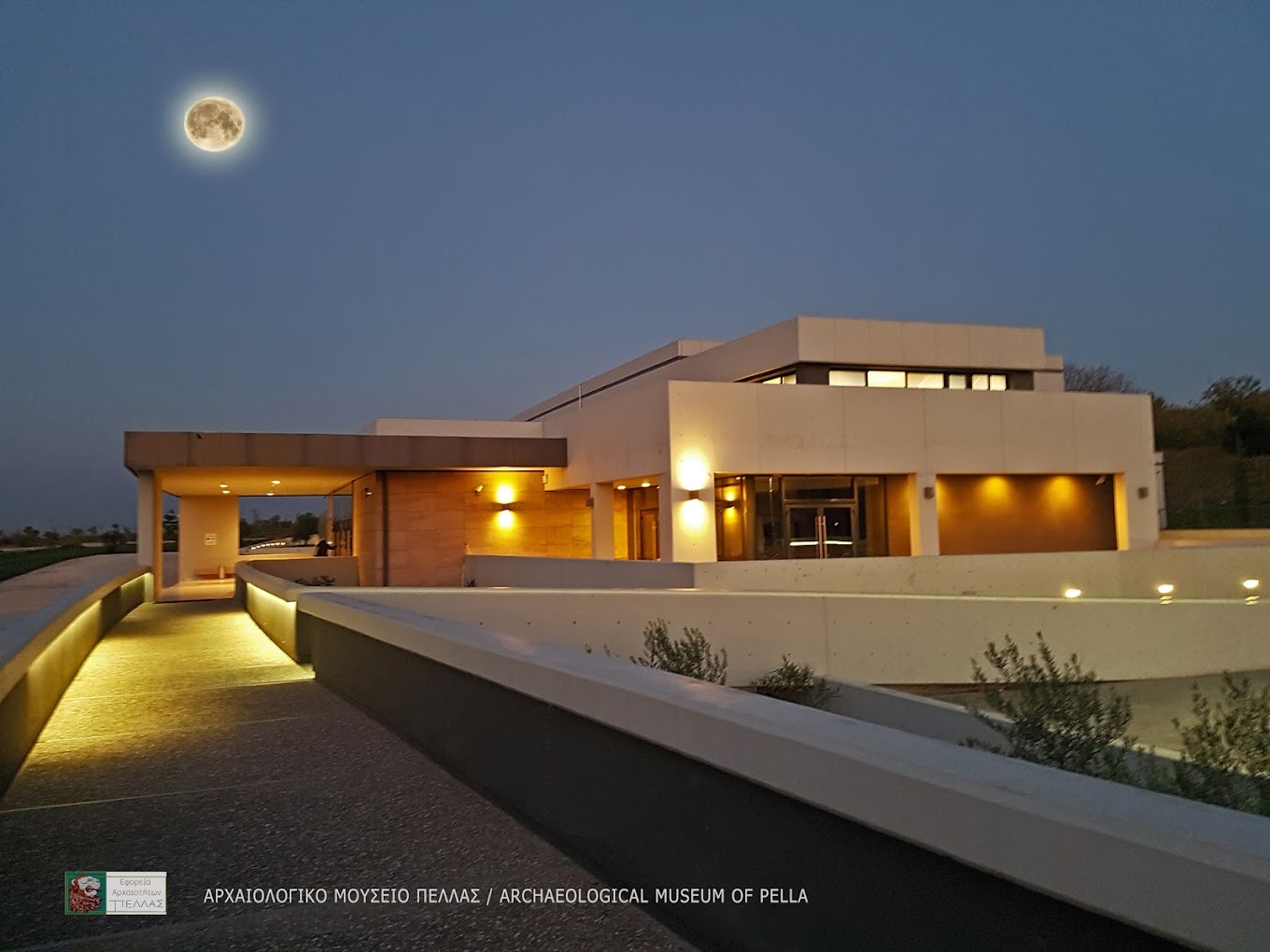
The Archaeological Museum of Pella which only opened in 2009, is the perfect antidote to the bare bones archaeological site. There are artifacts from as long ago as 6,500 BCE displayed in a number of distinct sections featuring finds from private homes, public buildings, religious sites, tombs and the palace. To me it was the mosaics that were the most outstanding.
This is a public domain photo of the entrance hall with the stunning lion hunt mosaic front and centre.
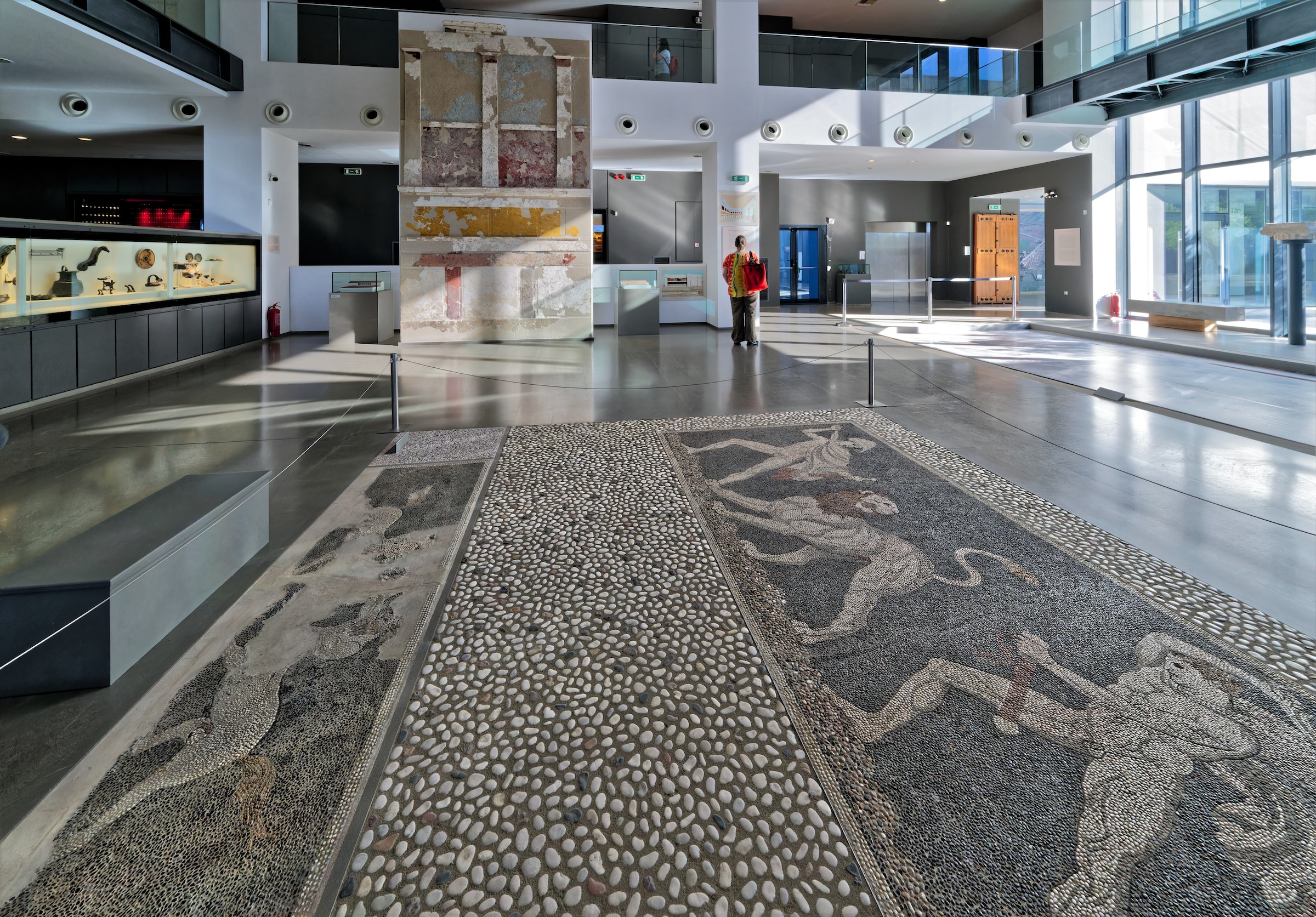
Here is a public domain photo of the Stag Hunt mosaic.
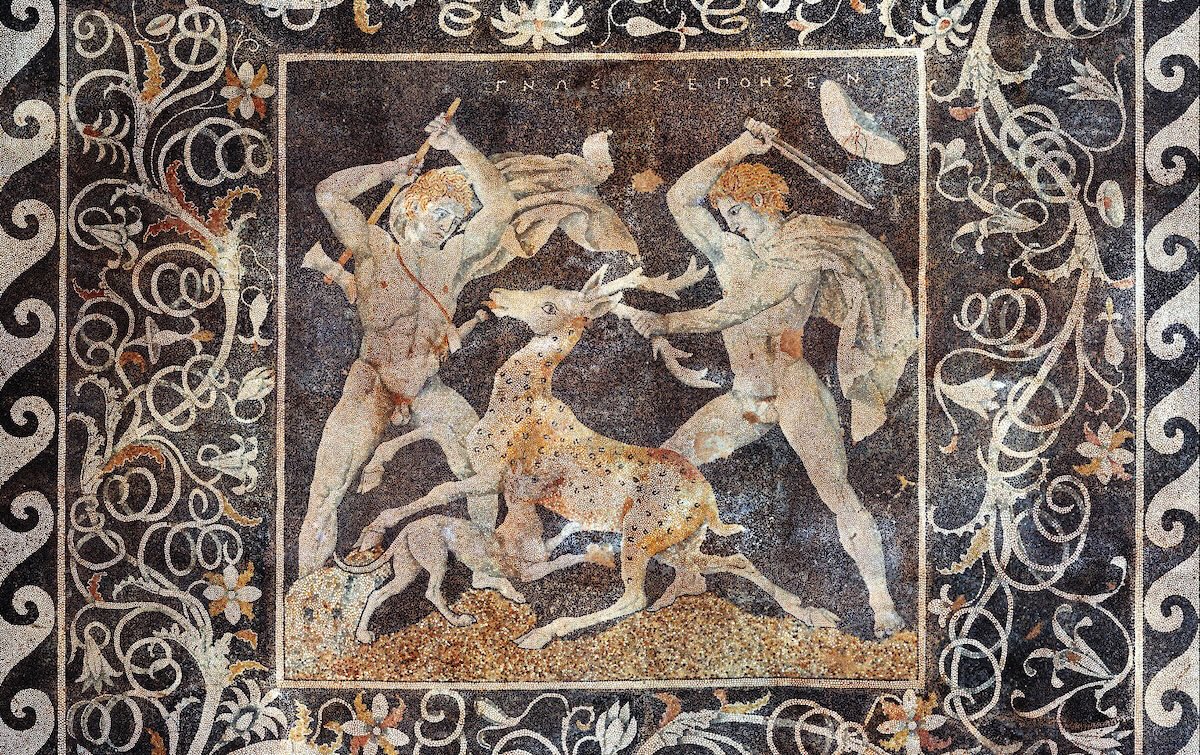
And Dionysius riding a leopard from the villa we just visited.
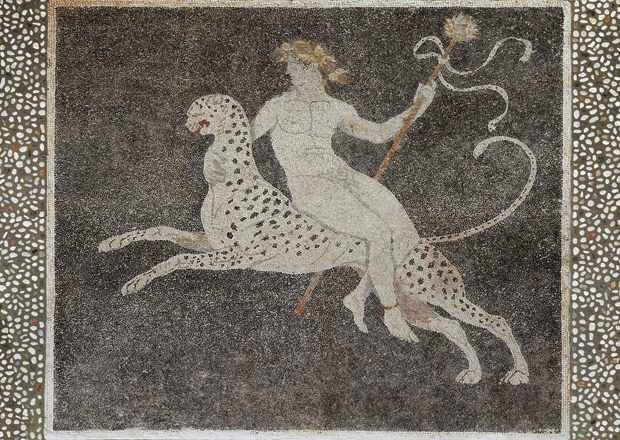
I could write an entire post on the outstanding artefacts on display from this great capital of Macedonia, but I’ll confine it to just a few I took in this gallery below. Double click to open and then again to blow up to full size.
The bust of Alexander was found not in Pella, but in the nearby city of Giannitsa. The golden wreath is typical of the incredibly fine and complex metalwork that was being made in Macedonia at its height and one of the reasons that Greece wants to make sure the undiscovered Macedonian tombs in the Pella area don’t get looted before the archaeologists find them. We will see many more examples at Vergina. Another example of this metalwork is the bed frame with four sets of golden griffons savaging a helpless sheep or goat – perhaps an allegory for what the Macedonians would do to their enemies.
The vessel depicting the birth of Aphrodite is called a krater which was used to mix wine and water and is in what is known as the red-figure style which was invented in Athens around 520 BCE. This was found in one of the Macedonian tombs in Pella and may have been imported from southern Greece where most of this type of pottery was produced. However, recent archaeological studies based on red-figure pottery in the Thessaloniki museum suggest that there may have been a studio in Pella producing such wares. What is notable about this piece is that Aphrodite is painted white, a rarity in this style. She is depicted rising from sea where she was conceived after the Titan Cronus cut off his father Uranus’ genitals and hurled them into the ocean. This event occurred just off the island of Cyprus and on an upcoming AA trip to that island I will visit Paphos where she first came ashore.
Or maybe it’s not Aphrodite. Although the museum website states that the female figure is Aphrodite that does not explain the figures surrounding her that are clearly wielding hammers. There is a Greek myth first documented by Hesiod that states that Pandora was the first human woman created and it by was the god Hephaestus who literally hammered her up out of the earth. In a play by Sophocles of which only a few stanzas remain, Pandora or the Hammerers, he describes a scene very much like that depicted on the krater, ascribing the hammering to satyrs and not Hephaestus. One of the things I love about this style of Greek pottery is that they all tell a story, but 2,400 years later people don’t always agree on what that tory is. Each person is free to form their own opinions and mine is that this is Pandora and not Aphrodite.
OK, probably TMI so let’s move on to the next piece about which there is no doubt about the theme, the vase depicting the contest between Poseidon and Athena for the right to name the city after themself. Poseidon offered the gift of eternal water while Athena offered the olive tree. Obviously Athena won. Turns out being a sea god Poseidon’s water was too salty while Athena’s gift offered food, oil and firewood. Given the theme, this vase almost certainly was made in Athens.
I could go on, but you’ve probably had enough.
- Bust of Alexander
- Gold Wreath
- Individual Warrior Armour
- Female Figures and Jewellry
- Bed Frame
- 5th Century BC Burial
- Macedonian Noblewoman
- Macedonian Toys
- Lion’s Head Water Spout
- Macedonian Warriors
- Terra Cotta Figures from the Agora
- Pottery Shop
- The Birth of Aphrodite
- Vase Depicting the Naming of Athens
- Wall of a Pella House
One last thing, the museum has a 3-D printer that can produce modern versions of ancient subjects such as these statuettes of Macedonian women showing their distinct dress and hair styles. This was the first time I had ever seen such things and it promises to bring a whole new twist to delving into the ancient past.
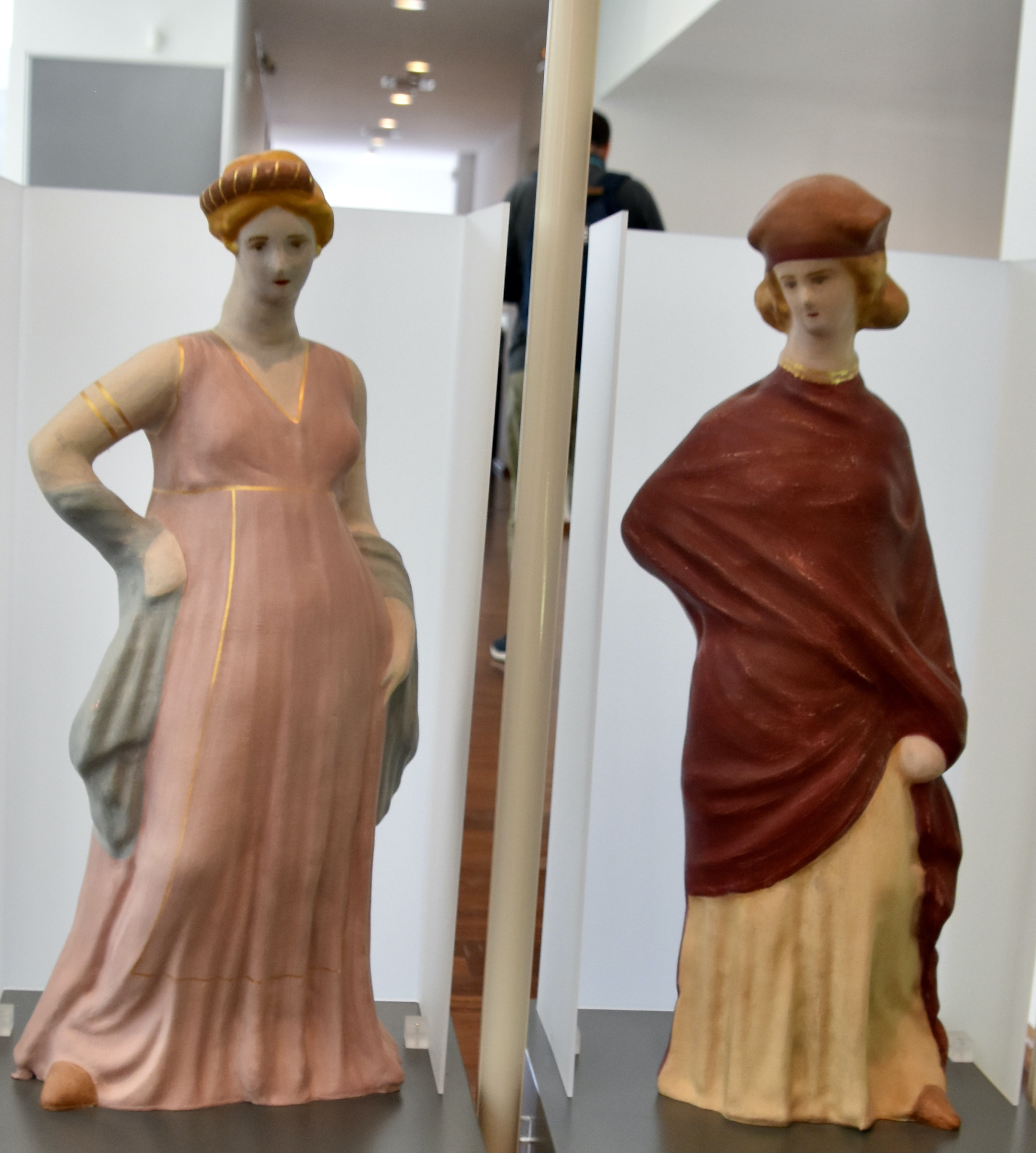
So while the actual site of Pella left a lot to the imagination (literally), the museum did not.
We tend to think of the Macedonians as somehow lesser in historical stature than their Greek brethren – known for their unrivalled prowess in battle, but little else. As I have seen at the Pella museum this is an unfair stereotype and this characterization will be completely debunked when we visit the fabulous tombs of Vergina in the next post. Hope to see you there.


